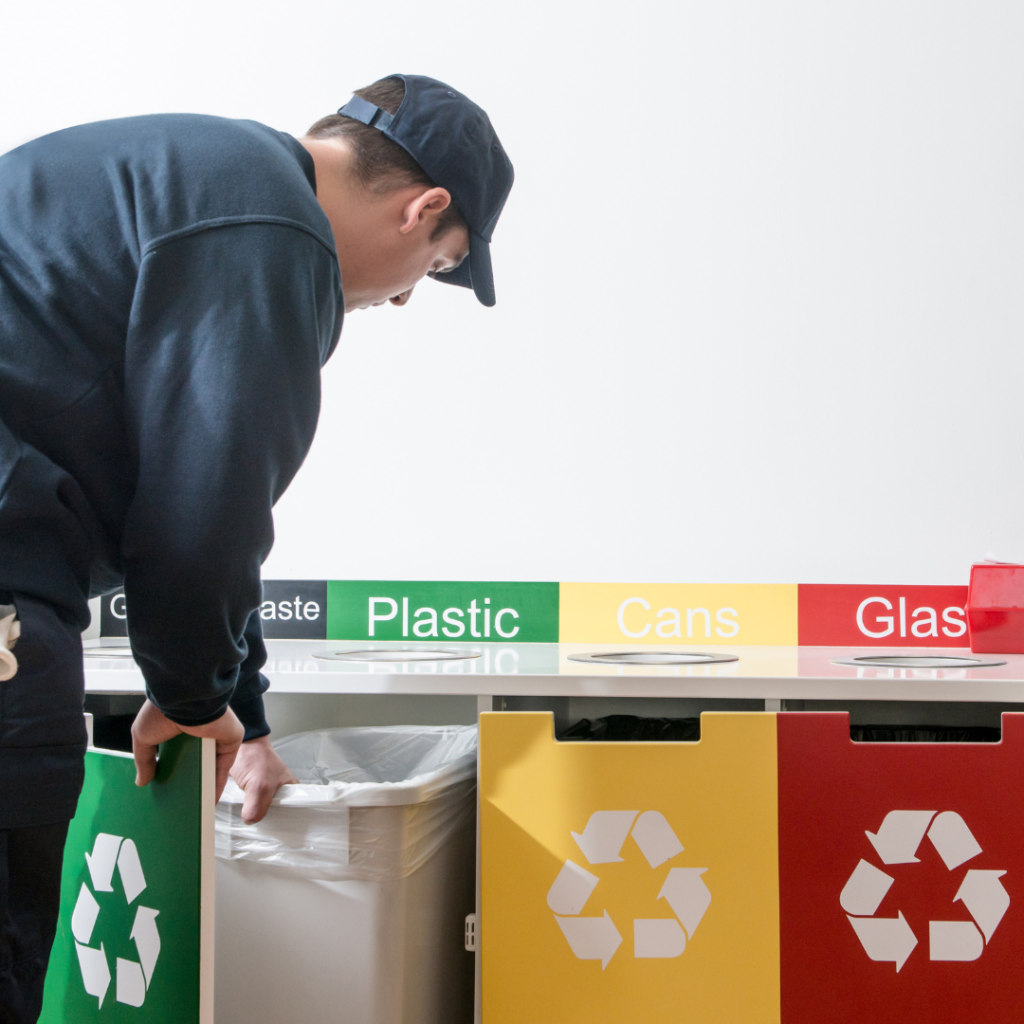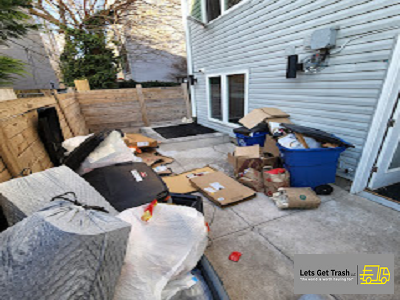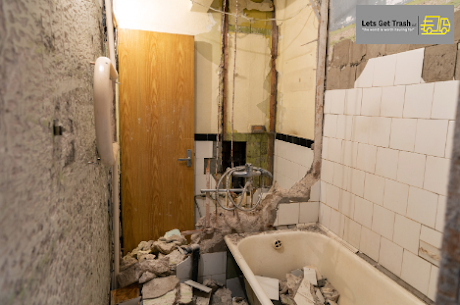Dumpster Drop-off and Pickup: How It Works
Dumpster drop-off and pickup services are crucial components of waste management, particularly for construction projects, home renovations, and large-scale cleanouts. Understanding how these services work can streamline the process and ensure efficient disposal of waste materials. From scheduling to removal, here’s a comprehensive guide on how dumpster drop-off and pickup services operate.
Selecting the Right Dumpster
The first step in the process is determining the appropriate size and type of dumpster for your project. Dumpsters come in various sizes, typically measured in cubic yards, ranging from small 10-yard containers suitable for minor cleanouts to large 40-yard bins ideal for construction sites. Consider the volume and type of waste you’ll be generating to ensure you choose the right size.
Choosing the appropriate dumpster size and type is a critical step in ensuring the success and efficiency of your waste disposal project. Here’s a more detailed exploration of factors to consider when selecting the right dumpster:

Assessing Waste Volume and Type:
Before choosing a dumpster size, carefully evaluate the volume and type of waste materials you’ll be generating. Consider the nature of your project, whether it’s a home renovation, construction site, or commercial cleanup. Different types of projects produce varying amounts and types of waste, ranging from bulky debris like furniture and drywall to heavy materials like concrete and asphalt.
Estimating Waste Quantity:
Estimating the amount of waste you’ll need to dispose of is essential for selecting the appropriate dumpster size. If you’re uncertain about the volume, it’s advisable to err on the side of caution and choose a slightly larger dumpster to accommodate unexpected waste. Waste management companies typically provide guidance on estimating waste volume based on project specifics, helping you make an informed decision.
Choosing the Right Size:
Dumpsters come in various sizes, typically measured in cubic yards, ranging from small 10-yard containers to large 40-yard bins. Here’s a breakdown of common dumpster sizes and their suitable applications:
- 10-Yard Dumpster: Ideal for small-scale projects, such as garage cleanouts, minor renovations, or yard debris removal. It can typically hold the equivalent of three to four pickup truck loads of waste.
- 20-Yard Dumpster: Suitable for medium-sized projects, including kitchen or bathroom renovations, flooring replacements, or small-scale construction projects. It can hold approximately six to eight pickup truck loads of waste.
- 30-Yard Dumpster: Recommended for larger projects, such as major home renovations, commercial construction, or extensive cleanouts. It can accommodate roughly nine to twelve pickup truck loads of waste.
- 40-Yard Dumpster: Designed for large-scale projects generating significant volumes of waste, such as commercial demolition, industrial cleanup, or major construction projects. It can hold approximately twelve to sixteen pickup truck loads of waste.
Considering Space Constraints:
In addition to assessing waste volume, consider the available space at your project site when selecting a dumpster size. Ensure there’s enough room for the dumpster to be placed safely and conveniently without obstructing traffic flow or access to the area. If space is limited, you may need to opt for a smaller dumpster or arrange for alternative placement options, such as street permits or temporary closures.
Consulting with Waste Management Professionals:
If you’re unsure about the appropriate dumpster size for your project, don’t hesitate to consult with waste management professionals. Experienced providers can offer valuable insights and recommendations based on their expertise and knowledge of local regulations. They can assess your project requirements and recommend the most suitable dumpster size and type to meet your needs effectively.
Selecting the right dumpster size and type is a crucial decision that can significantly impact the success and efficiency of your waste disposal project. By carefully assessing waste volume, estimating quantity, considering space constraints, and consulting with waste management professionals, you can make an informed choice that maximizes convenience, minimizes costs, and ensures the smooth progress of your project. Investing time and effort into selecting the right dumpster upfront can streamline the waste management process and contribute to a more sustainable environment.
Scheduling Drop-off
Once you’ve identified the appropriate dumpster size, you’ll need to schedule drop-off with a reputable waste management company. Many companies offer online booking systems or phone assistance to facilitate scheduling. Provide details about your location, desired drop-off date, and any specific instructions for placement.
Scheduling drop-off for your dumpster is a pivotal step in initiating your waste management project efficiently. Here’s an in-depth exploration of the process and considerations involved in scheduling the drop-off of your dumpster:

Planning Ahead:
Start by planning your project timeline and determining the ideal timeframe for the dumpster drop-off. Consider factors such as the start date of your project, the duration of the project, and any specific deadlines or milestones you need to meet. Planning ahead allows you to secure the dumpster drop-off at a convenient time and ensures that it aligns with your project schedule.
Choosing a Reputable Waste Management Company:
Research and select a reputable waste management company that offers dumpster rental services in your area. Look for companies with positive reviews, transparent pricing, and a track record of reliability and customer satisfaction. Verify that the company provides the dumpster sizes you need and offers flexible scheduling options to accommodate your project timeline.
Contacting the Waste Management Company:
Once you’ve identified a suitable waste management company, contact them to inquire about dumpster availability and scheduling options. Many companies offer multiple communication channels, such as phone, email, or online booking systems, to facilitate scheduling. Provide details about your project, including the type of waste, desired dumpster size, drop-off location, and preferred drop-off date.
Confirming Drop-off Details:
After discussing your requirements with the waste management company, confirm the drop-off details to ensure accuracy and avoid any misunderstandings. Verify the scheduled drop-off date, delivery location, and any specific instructions or considerations for placement. Clarify any questions or concerns you may have regarding the drop-off process to ensure a smooth and hassle-free experience.
Preparing the Drop-off Site:
Prior to the scheduled drop-off date, prepare the drop-off site to facilitate the delivery of the dumpster. Clear any obstacles or debris from the designated placement area to ensure unobstructed access for the delivery truck. Communicate any site-specific instructions or access restrictions to the waste management company to facilitate seamless drop-off.
Flexibility and Communication:
Maintain open communication with the waste management company and remain flexible regarding scheduling arrangements. Factors such as weather conditions, traffic congestion, or unforeseen circumstances may impact the scheduled drop-off time. Stay in touch with the company to receive updates and make any necessary adjustments to the drop-off schedule as needed.
Confirming Drop-off Arrival:
On the scheduled drop-off date, confirm the arrival of the dumpster at the designated location. Ensure that the dumpster is placed according to your instructions and meets your project requirements. Conduct a brief inspection to verify that the dumpster is in good condition and ready for use.
Scheduling drop-off for your dumpster rental is a crucial step in initiating your waste management project effectively. By planning ahead, choosing a reputable waste management company, confirming drop-off details, preparing the drop-off site, maintaining flexibility and communication, and confirming drop-off arrival, you can ensure a seamless and successful start to your project. Investing time and effort into the scheduling process sets the foundation for a smooth and efficient waste disposal experience, ultimately contributing to the success of your project.
Delivery and Placement
On the scheduled date, the dumpster will be delivered to your specified location by the waste management company. It’s essential to prepare the drop-off site beforehand, ensuring there’s enough space for the dumpster and clear access for the delivery truck. Communicate any specific placement instructions to the delivery driver to ensure the dumpster is placed conveniently for your project.
Filling the Dumpster
Once the dumpster is in place, you can begin filling it with waste materials according to local regulations and guidelines provided by the waste management company. It’s crucial to avoid overfilling the dumpster, as this can pose safety hazards and may result in additional fees. Make sure to distribute the waste evenly within the dumpster to optimize space utilization.
Scheduling Pickup
When your project is complete or the dumpster is full, schedule pickup with the waste management company. Again, this can typically be done online or over the phone, providing details about the desired pickup date and any specific instructions for removal.
Removal and Disposal
On the scheduled pickup date, the waste management company will arrive to remove the dumpster and its contents. They’ll transport the waste to an appropriate disposal facility, such as a landfill or recycling center, where it will be sorted and processed according to environmental regulations.
Post-Service Evaluation
After the dumpster has been removed, take some time to evaluate the overall service provided by the waste management company. Consider factors such as punctuality, customer service, and pricing to determine if you’re satisfied with the experience. Providing feedback can help improve future service and ensure a smooth process for others.
Conclusion
Dumpster drop-off and pickup services play a vital role in managing waste generated by various projects. By understanding how these services work and following the steps outlined above, you can ensure efficient disposal of waste materials while minimizing hassle and inconvenience. Whether you’re undertaking a home renovation, construction project, or large-scale cleanout, partnering with a reliable waste management company can simplify the process and contribute to a cleaner, more sustainable environment. Contact us today to schedule your dumpster drop-off and pickup services and experience hassle-free waste management for your project.







